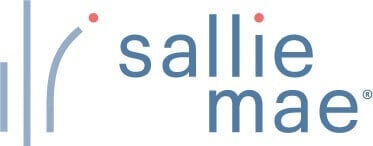As part of the admission process, colleges send out offer letters to all applicants who they have accepted into their college. This college offer letter is usually sent a week or so after sending out the acceptance letters, but what does an offer letter include? Here’s what you’ll find in a college offer letter (hint: it’s more than just what scholarships you got):
What Does a College Offer Letter Contain?
The college offer letter contains details about your financial aid package. The package is put together based on the information you submitted through the FAFSA. The important thing to know about college offer letters is that the information it contains is not restricted only to the ‘awards’ you have won. It in fact contains information about ALL financial aid that has been offered to you. This includes the number of federal student loans, your scholarship awards, and grants.
Additionally, it includes the number of student loans that the college itself is offering you. In other words, the offer letter lists the source of all your funds, so you know exactly how much you have in scholarships and grants. It also includes how much you may have to take out in loans. Keep in mind, the college only offers federal student loans, nor private loans.
Read Carefully
You must read through this offer letter carefully to determine how your financial aid has been broken down. The money that you get through scholarships and grants is free money. It makes sense that you should accept it all. However, you must take another look at the loans that have been offered to you and re-calculate whether you do need all of it. Take your time and break down what’s in your offer letter. College is a huge cost, so you want to take care with finding out just how you’re paying for it.
Additionally, every college will offer you a different offer letter package. One school may give you more scholarships and grants. On the other hand, another tells you that you have to take out a larger federal student loan. Wait until you get all your award letters before you make a decision. Waiting could mean the difference between a crushing student loan debt or graduating from college almost debt-free.

What if Your Circumstances Have Changed?
If your circumstances have changed from the time you filed the FAFSA—maybe a parent got a raise or an investment paid high dividends—and if you only need to take a smaller loan to cover the gap, you should write a letter to the college informing them about your decision to take a smaller loan.
Ideally, you should only borrow what you need, nothing more so that you graduate with the minimum debt possible. In other words, don’t take out more than you need, whether that’s more or less money to fill the gap.
If you have a gap to fill, use College Raptor’s free Student Loan Finder to compare lenders and interest rates side by side!
| Lender | Rates (APR) | Eligibility | |
|---|---|---|---|
 |
5.19% - 15.81%* Variable
3.99%-15.61%* Fixed |
Undergraduate and Graduate |
VISIT CITIZENS |
 |
4.79% - 14.96% Variable
3.49% - 15.49% Fixed |
Undergraduate and Graduate |
VISIT SALLIE MAE |
 |
4.38% - 17.99% Variable
3.39% - 17.99% Fixed |
Undergraduate and Graduate |
VISIT CREDIBLE |
 |
5.34% - 13.19% Variable
3.48% - 12.61% Fixed |
Undergraduate and Graduate |
VISIT LENDKEY |
 |
5.25% - 14.26% Variable
3.39% - 14.16% Fixed |
Undergraduate and Graduate |
VISIT ASCENT |
 |
3.70% - 8.75% Fixed |
Undergraduate and Graduate |
VISIT ISL |
 |
4.99% - 16.85% Variable
3.47% - 16.49% Fixed |
Undergraduate and Graduate |
VISIT EARNEST |
 |
5.00% - 13.97% Variable
3.69% - 14.22% Fixed |
Undergraduate and Graduate |
VISIT ELFI |






